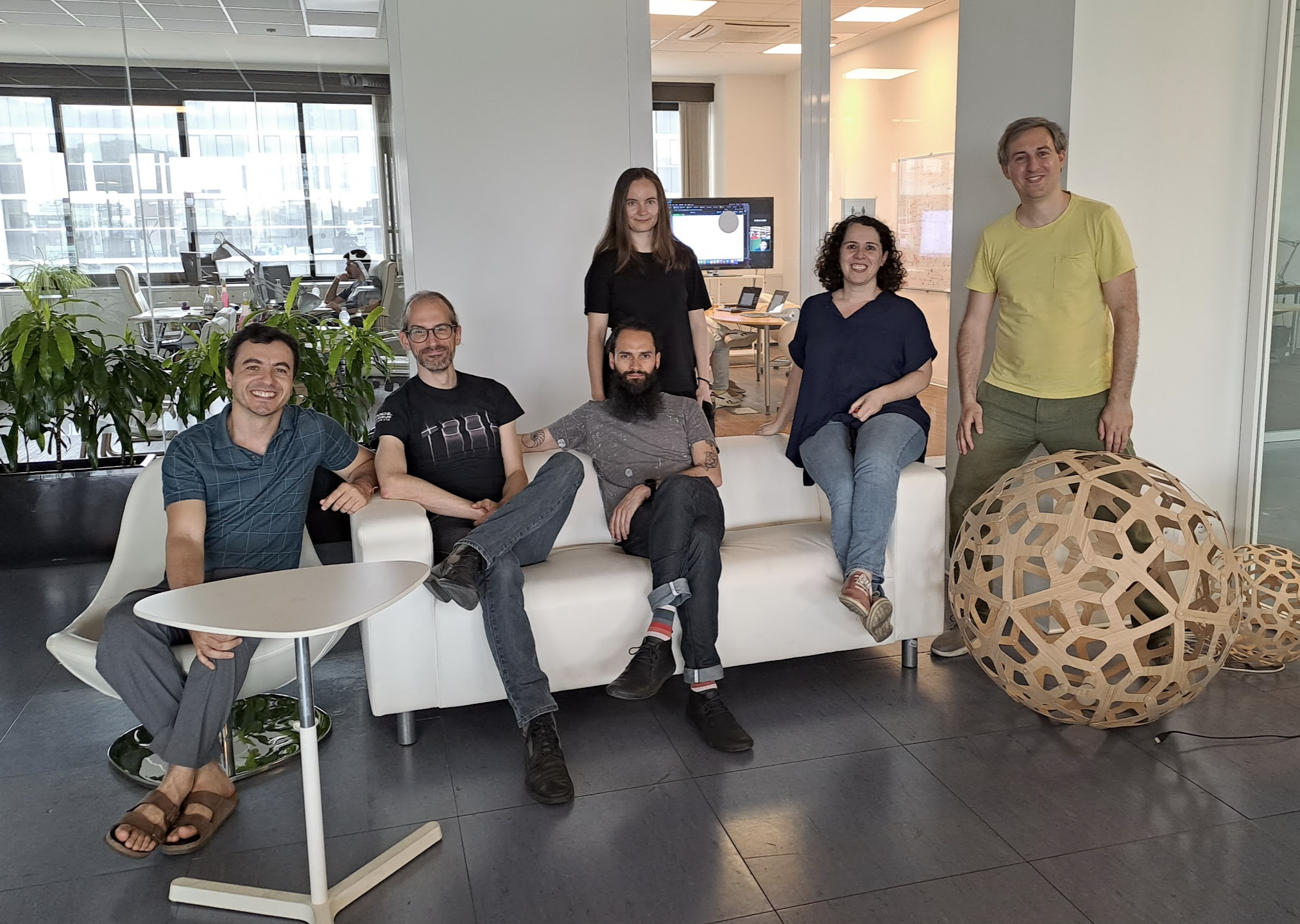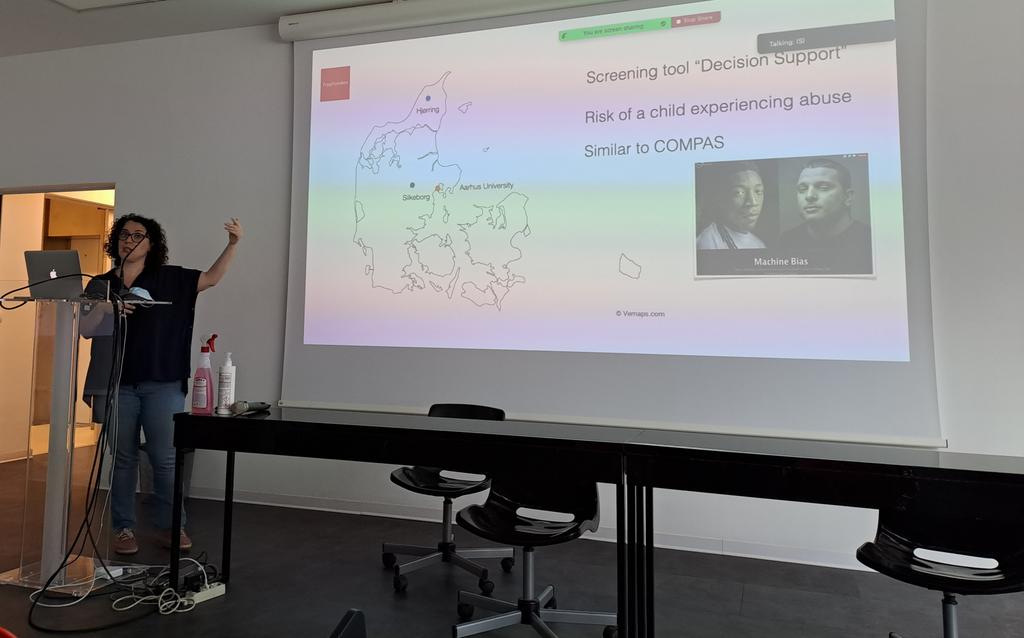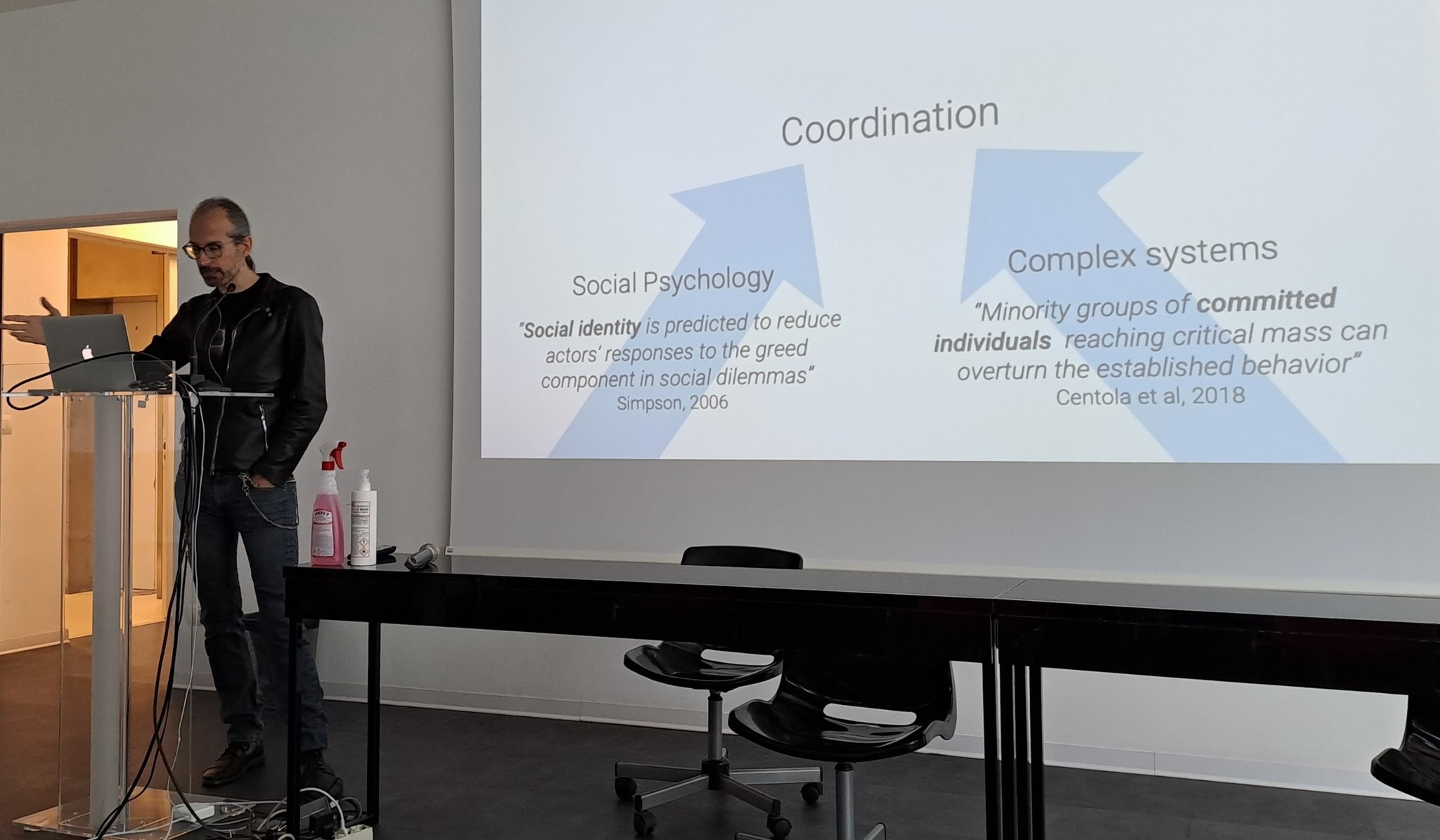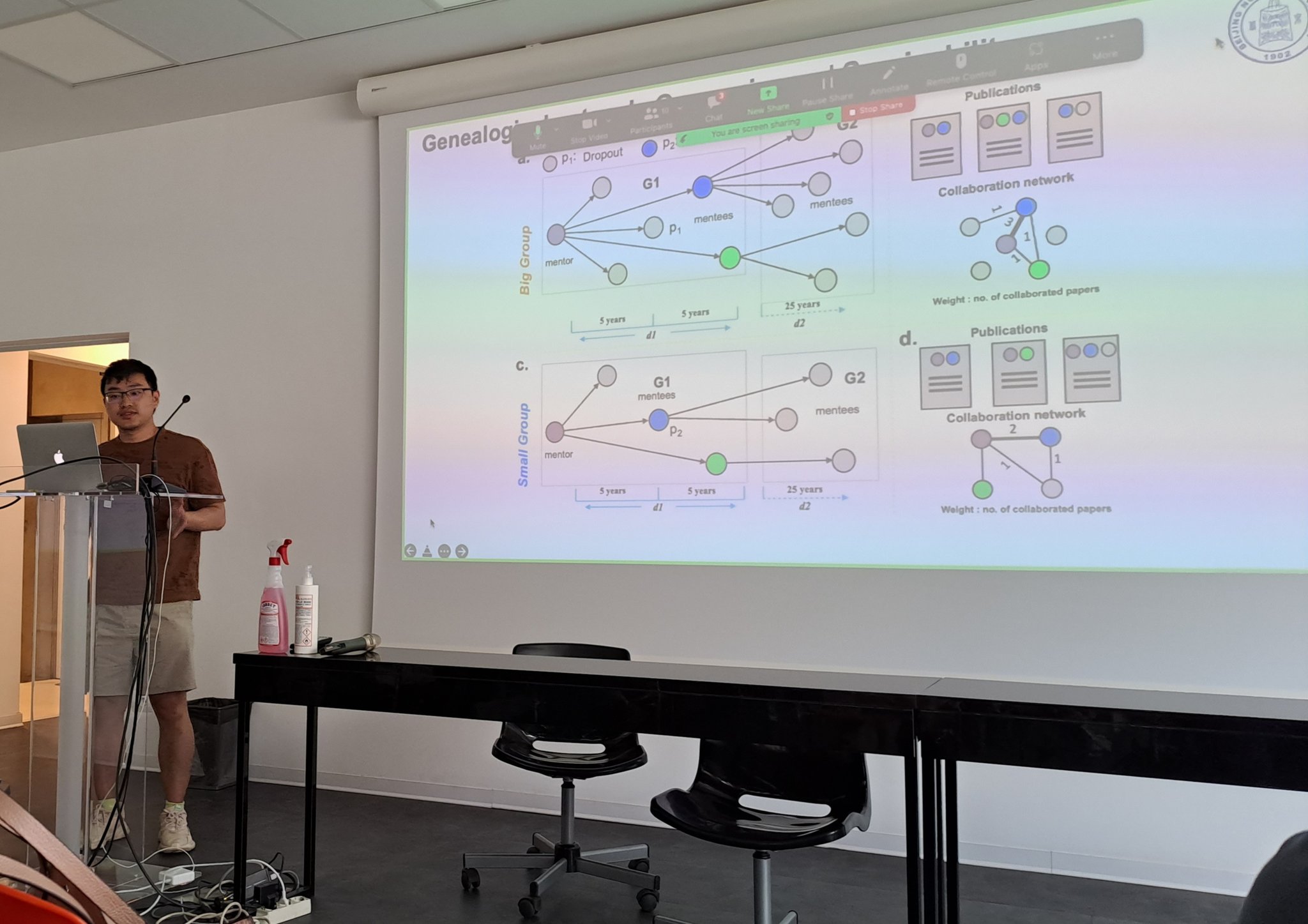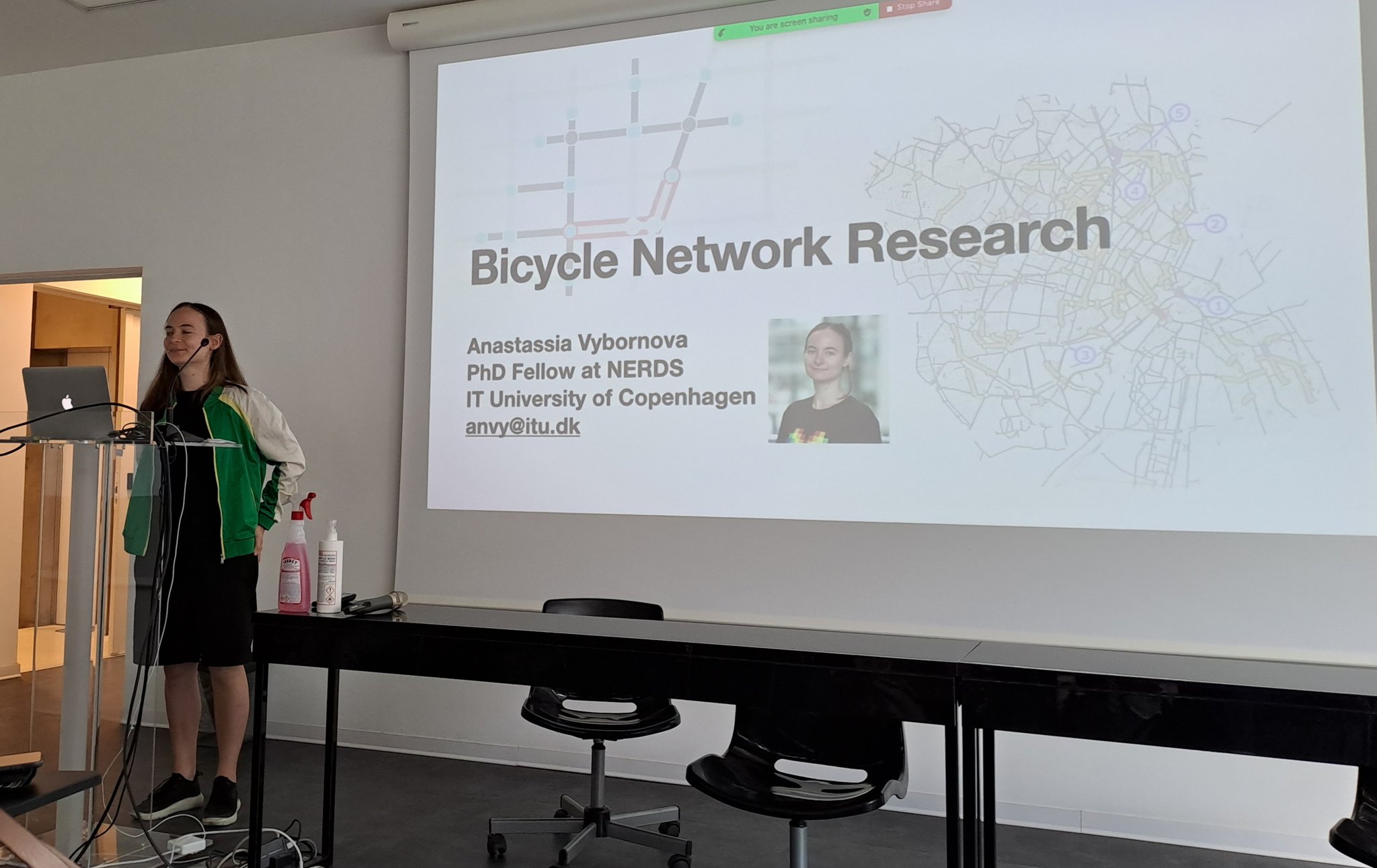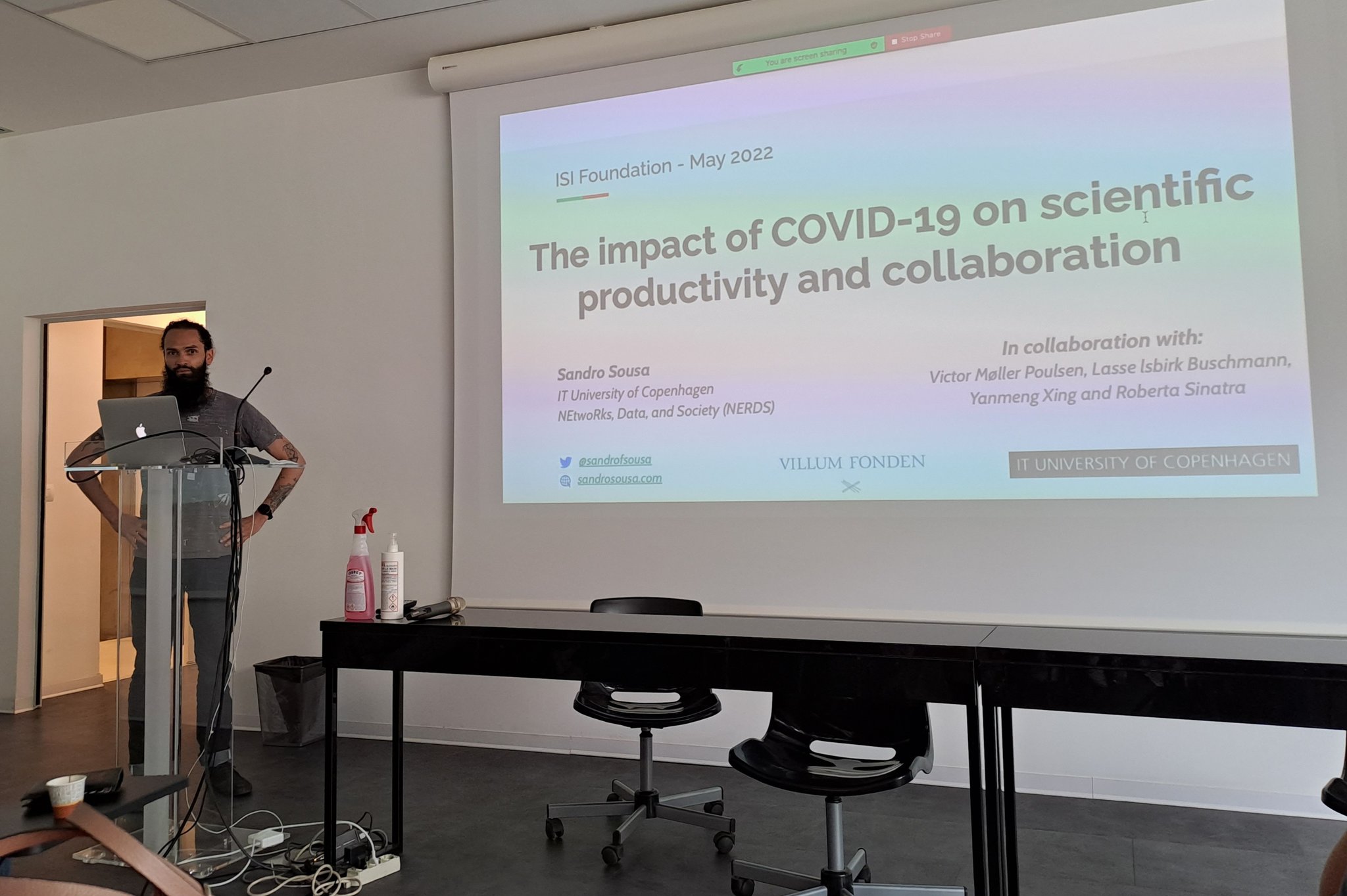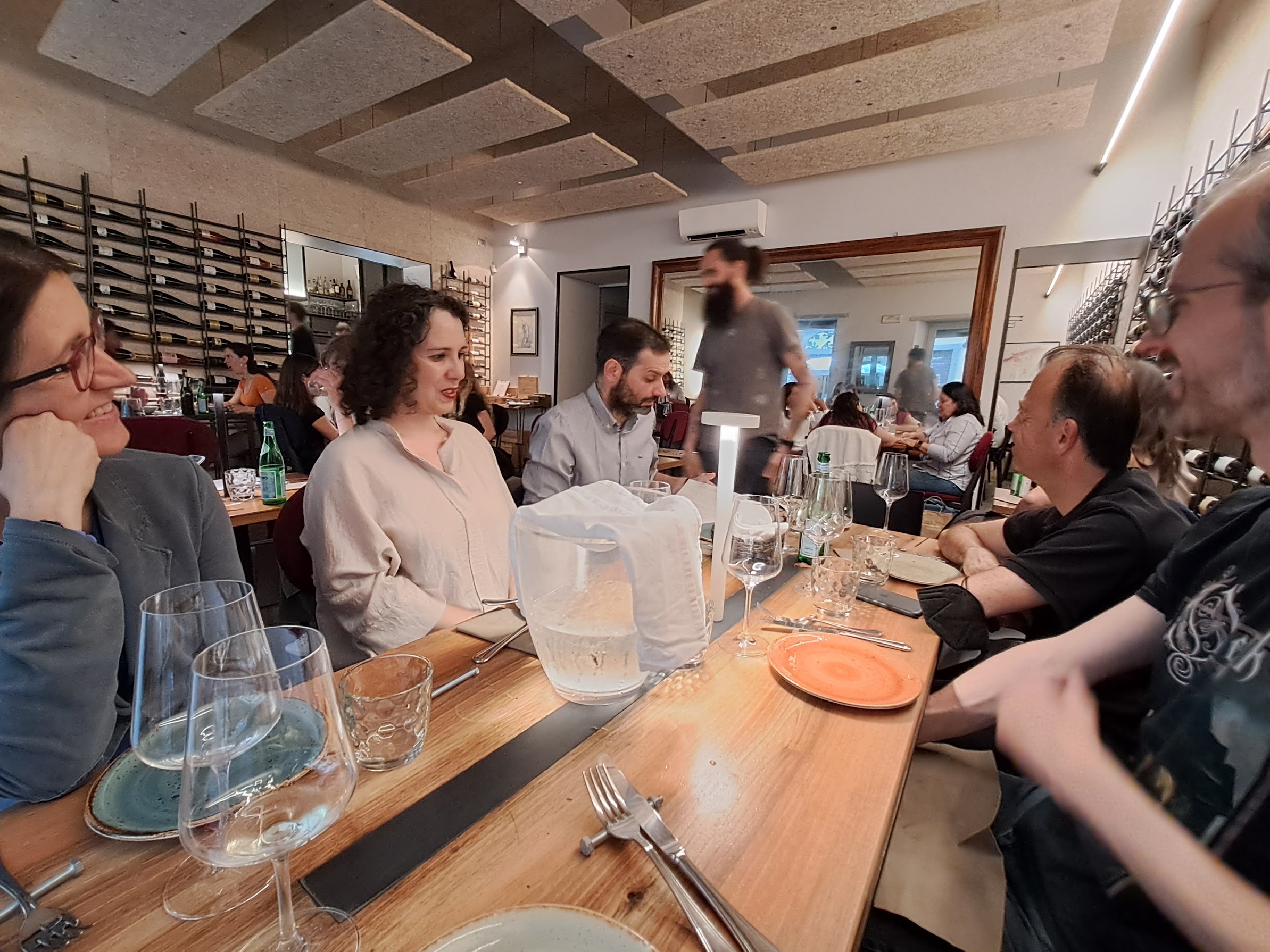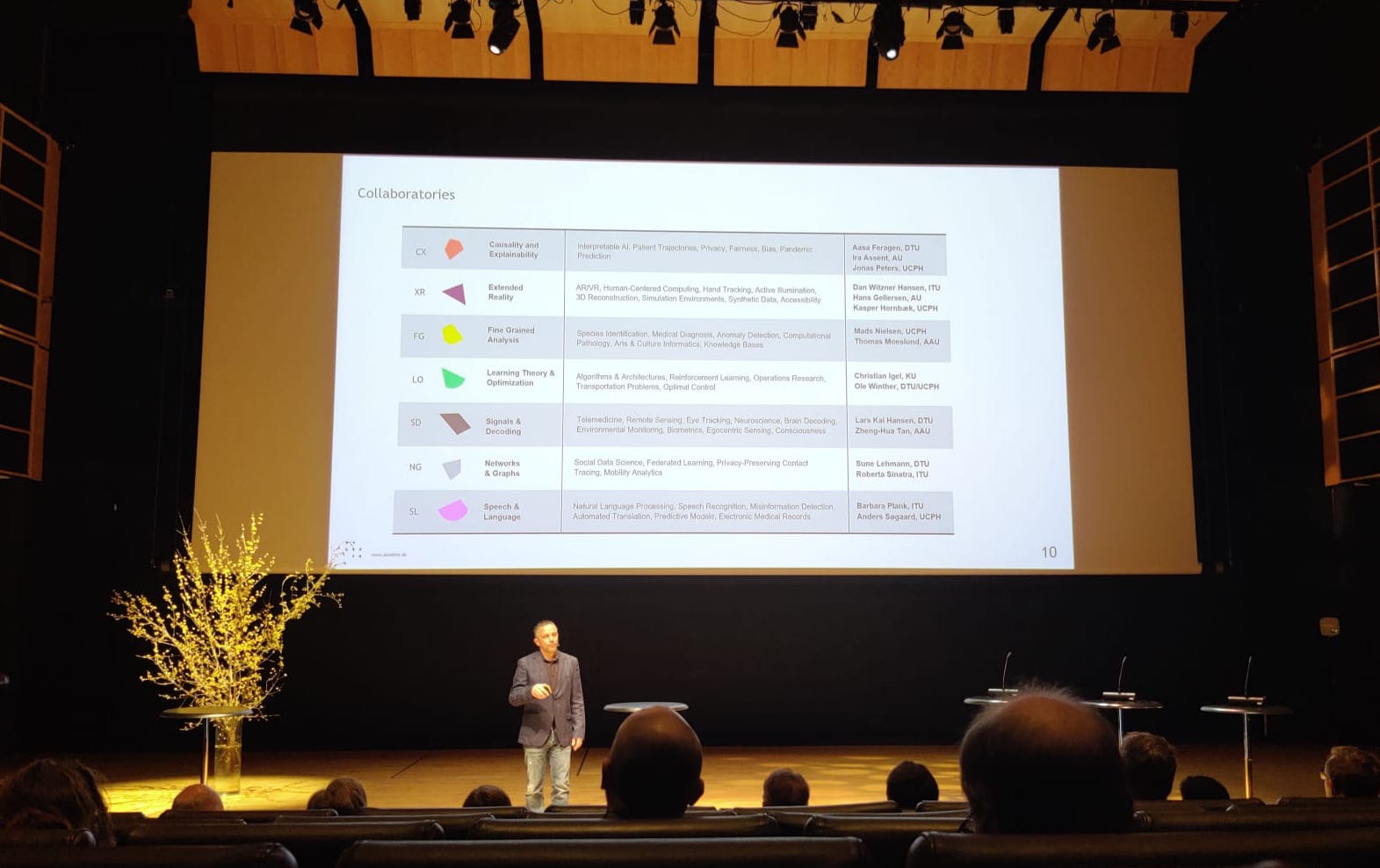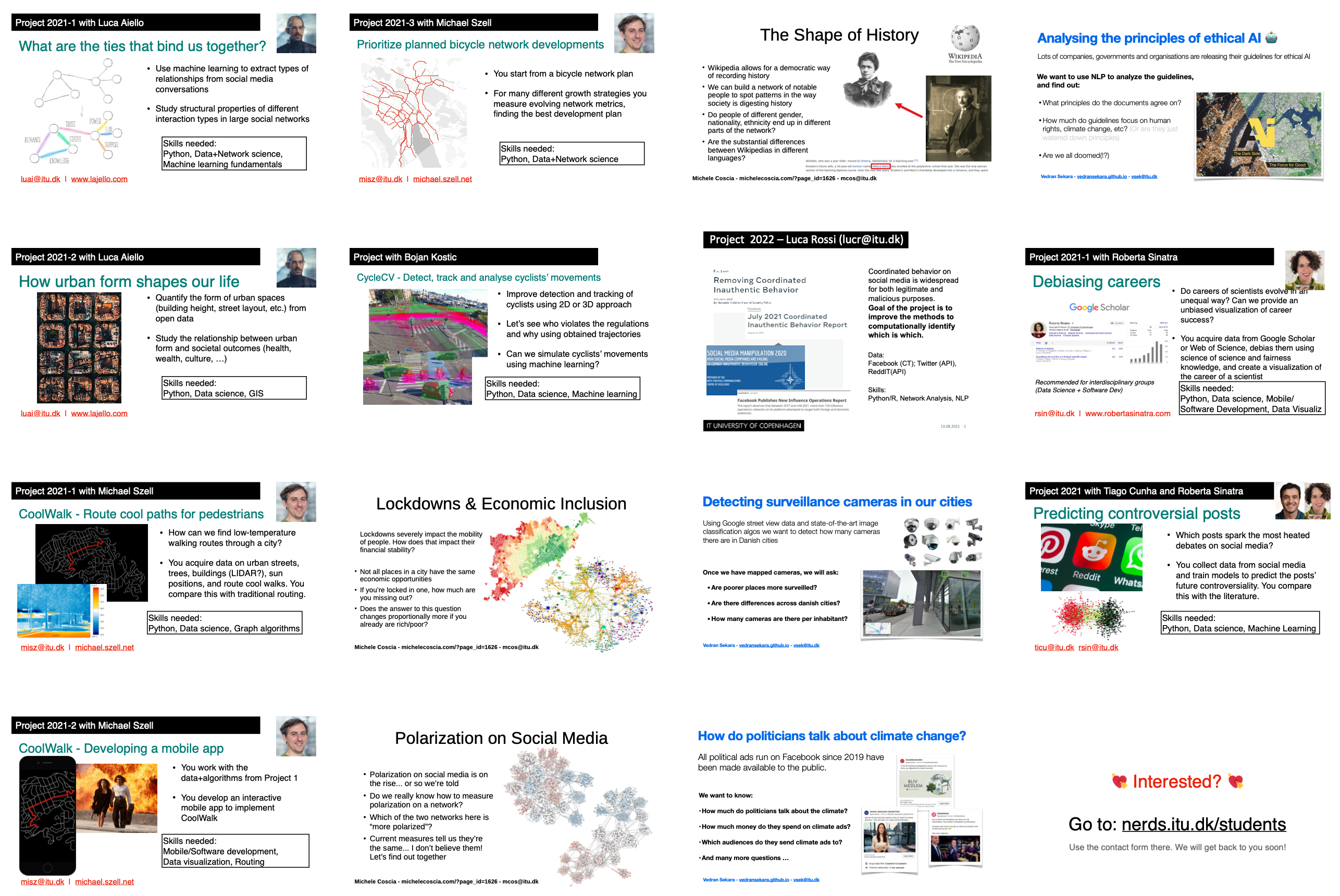Today our postdoc Bojan Kostic has sadly left our research group to industry, going from applying his computer vision know-how for desire line analysis, to playing with trains (data) in a data science company. We had a great time together with Bojan, he was a true enrichment to our group, both from a scientific and a social point of view, and we wish him all the best for his future!
Author Archives: misz
NERDS at ISI Foundation in Turin
For the last week, several of us NERDS have been visiting Turin, Italy, and our friends at ISI Foundation for a truly hearty scientific and social interchange.
Yesterday, ISI held a workshop in which our research groups exchanged know-how and learned from each other about all things data science, and how to apply it to the social good. We learned about topics as diverse as AI-based pdf crawlers, algorithmic bias, bicycle networks, or how to survive in a big research group.
Here some visual impressions of the workshop:
And of course, also many extracurricular activities were to be had!
We are having a great time in Turin but every party must come to an end, and most of us will leave back to our home in Denmark soon. Some of us are more lucky though and will stay a few more weeks, keeping enjoying this amazing city with our wonderful friends.
Two NERDS papers out: Road User Safety and Growing Bicycle Networks
We just published two more papers! Both are on the topic of sustainable mobility:
-
- Growing urban bicycle networks, by M. Szell, S. Mimar, T. Perlman, G. Ghoshal, and R. Sinatra, published in Scientific Reports
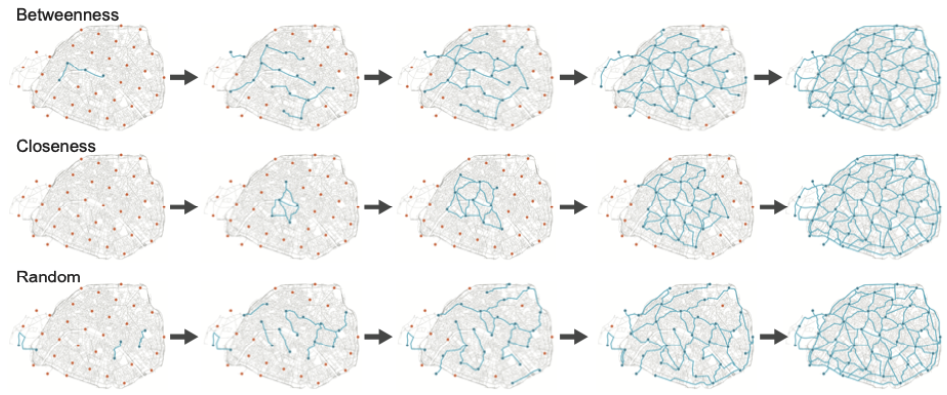
Here we explore systematically the topological limitations of urban bicycle network development. For 62 cities we study different variations of growing a synthetic bicycle network between an arbitrary set of points routed on the urban street network. We find initially decreasing returns on investment until a critical threshold, posing fundamental consequences to sustainable urban planning: Cities must invest into bicycle networks with the right growth strategy, and persistently, to surpass a critical mass. Growing networks from scratch makes our approach a generally applicable starting point for sustainable urban bicycle network planning with minimal data requirements.
The paper comes with an accompanying data visualization: https://growbike.net - Identifying urban features for vulnerable road user safety in Europe, by M. Klanjcic, L. Gauvin, M. Tizzoni, and M. Szell, published in EPJ Data Science
We identify urban features that are determinants of vulnerable road user safety through the analysis of inter-mode collision data across 24 European cities. We observe that cities with the highest rates of walking and cycling modal shares are the safest for the most vulnerable users. Our results suggest that policies aimed at increasing the modal share of walking and cycling are key to improve road safety for all road users.
We explain and motivate our project in this accompanying blogpost (to appear on https://blogs.biomedcentral.com):Identifying urban features for vulnerable road user safety in Europe
Which traffic participants and which urban features are most associated with road deaths? Recently published work in EPJ Data Science explores this question with data from 24 European cities.
Road crashes result in yearly 1.3 million deaths and 2.3 trillion USD of economic damage. Because of this pressing societal issue, the UN has declared in 2015 the global sustainability goal to halve the number of road deaths by 2020. This goal failed: Road deaths keep rising worldwide.
Many cities are wondering how to solve this issue. However, they might not have the full picture because road crash statistics tend to be reported in a victim-centered way: There are detailed statistics on the distributions of victim demographics such as age or gender, but this neglects necessary information for answering two important questions towards better crash prevention: 1) Who causes the crashes? 2) Why do crashes happen?
The first question can be explored via the so-called casualty matrix. It shows the casualties between all combinations of different traffic participants, for example the threat of cars on cars, of cars on pedestrians, or the threat of trucks on cyclists.
As has been previously shown in an impressive data visualization by a Dutch journalist and researcher team, the by far biggest threat to human life on urban streets in the Netherlands is motorized vehicles – cars and trucks – while cyclists and pedestrians are overwhelmingly their victims and harmless. This sounds plausible, but a systematic, quantitative study over multiple countries has been missing.
The second question – Why do crashes happen? – is much harder to answer. Generally crashes happen in an interplay between the individual behaviors of crash participants and their environments.
Environmental features like the extent of pedestrian areas, cycling tracks, or speed limits, are easier to collect than behavioral data, therefore their relation to road user risk could be explored in a straightforward way. And because the environment can be changed or regulated by decision makers, they can be held responsible to act.
To support with evidence such actions towards making cities safer, the OECD recently called for developing a modern approach to road safety: 1) collect and analyze crash data from a larger set of cities, 2) investigate the relationships between urban shape, density, speeds, and road user risk, and 3) analyze casualty matrices.
Inspired by these OECD recommendations and the Dutch data visualization, in our work we collected crash data from 24 cities in 5 European countries with high enough resolution to build and explore casualty matrices, to quantify road safety in a systemic approach, and to identify those urban features that are most relevant, especially for vulnerable road users like pedestrians who are known to be disproportionally impacted.
Exploring the casualty matrices first, we found the same overall picture as our Dutch colleagues, see Fig. 1: Cars are the most substantial hazard. However, we also found considerable local variations. For example, cars are a considerable threat to pedestrians and cyclists in inner London, but this is much less the case in Barcelona.
 Figure 1: Casualty matrices for 2018 show road deaths and serious injuries after a traffic participant on the left collided with one on the bottom. Cars are responsible for the majority of road deaths/injuries, while columns for pedestrians and cyclists do not appear because they pose practically no risk to others.
Figure 1: Casualty matrices for 2018 show road deaths and serious injuries after a traffic participant on the left collided with one on the bottom. Cars are responsible for the majority of road deaths/injuries, while columns for pedestrians and cyclists do not appear because they pose practically no risk to others.When normalizing the number of deaths and serious injuries by population, we found British cities to be most dangerous, while Oslo is by far the least dangerous. This is not surprising given how much Oslo has recently invested into following a Vision Zero strategy, i.e. to aim for zero road fatalities, which they achieved in 2019.
Finally, we set out to answer: What are the urban features most associated with crashes? Here we considered several features acquired from different sources, like OpenStreetMap: population density, the amount of bicycle tracks versus car lanes, the fraction of low-speed-limit streets, the distribution of how people move (walking, cycling, public transport, or motor vehicles), temperature, precipitation, and GDP.
Using an information theory measure to identify the most fitting pairings of these features with road crashes, we found the best significant predictor, see Fig. 2: Cities with more people walking have less road deaths.
 Figure 2: The share of people walking in a city is a significant predictor for less casualties, for any traffic participant killed or seriously injured by a car. Numbers are regression coefficients, black borders denote statistical significance at p < 0.05.
Figure 2: The share of people walking in a city is a significant predictor for less casualties, for any traffic participant killed or seriously injured by a car. Numbers are regression coefficients, black borders denote statistical significance at p < 0.05.Interestingly, this result extends to all modes of transport: More walking is associated not just with higher pedestrian safety, but also with higher cyclist and motorist safety.
Apart from the share of walking, a similarly strong association with road safety is having more streets limited to at most 30 km/h.
We need to be clear that our results can be only as good as the underlying data, and these can have large reporting biases. For example, crashes with cyclists are often not reported, and different EU countries have different reporting procedures. So, more research and more standardized policies on crash reporting are needed. Also, we only calculated statistical correlations, so we cannot say anything about cause and effect.
Nevertheless, our data-driven conclusions support a modern, evidence-based paradigm of road safety, suggesting this advice to urban decision makers: Make your cities more walkable and remove the hazard of cars. Besides the massive public health benefits, this will make your city more livable and its transport system more sustainable.
- Growing urban bicycle networks, by M. Szell, S. Mimar, T. Perlman, G. Ghoshal, and R. Sinatra, published in Scientific Reports
Three years of NERDS
NERDS was founded exactly 3 years ago by three young assistant professors and one associate professor, to be a reference point at ITU for the research on network and data science applications to social systems. At 3 years old, we have learned to say our name when asked, to not touch hot objects, and to ask “Why?”. We have also grown to a staggering 14 members and have become a vibrant research group with seminars, visiting interns, and fun social gatherings.
years ago by three young assistant professors and one associate professor, to be a reference point at ITU for the research on network and data science applications to social systems. At 3 years old, we have learned to say our name when asked, to not touch hot objects, and to ask “Why?”. We have also grown to a staggering 14 members and have become a vibrant research group with seminars, visiting interns, and fun social gatherings.
On our journey we have made many local friends and strengthened our ties, from DTU and KU (SODAS) to organizations like Supercykelstier. We have also impressed several funding agencies on the way, including VILLUM Foundation, Carlsberg Foundation, DIREC, or the Danish Ministry of Transport – so much that they entrusted us with enough funding to grow our research group further. BTW: We have an open call for 3 Phds/Postdocs.
More of our most important achievements so far:
- Publications: We have published 46 papers, some of them in top venues like Nature or PNAS, on as diverse topics as bicycle network growth, gender inequality, or multilayer networks.
- Organization: Together with KU ad DTU we brought DataBeers to Copenhagen and held two successful (booked out) events so far with 150 attendants each. After a pandemic break we look forward to reboot Databeers soon! More recently, Roberta became co-lead of the networks and graphs collaboratory at the newly established AI Pioneer centre.
- Scientific exchange: After kicking off successfully our ongoing NERDS lunch seminar series in 2019, we have now restarted the series. Let us know if you are interested to present to us!
- Outreach: Michael’s award-winning data visualization project “What the Street!?” got incorporated into the permanent exhibition of Futurium, Berlin. With our students we also developed other platforms, such as growbike.net and fixbike.net, and we authored several public opinion pieces engaging in policy discussions. We are also maintaining an active Twitter account, connecting internationally with researchers and industry: @nerdsitu
- Media Coverage: We were covered by top international media such as Le Monde, Der Spiegel, Fast Company, and got interviewed by Captain Kirk.
What does the near future hold?
- We will hire more postdocs and PhD students with our newly acquired grants
- We will soon say goodbye to our long-term members Bojan and Yanmeng
- We will celebrate one of us becoming Full Professor this year
- We are awaiting and continually submitting even more grant applications to expand
- Organizing more DataBeers and social events
Looking back to our goals 3 years ago, we have all reason to be proud to have 1) built up a flourishing network of Denmark-based network/data science research groups, connecting ITU, KU, DTU, and others, 2) successfully impressed several funding agencies and public stakeholders to engage with us solving societal problems with our research. We will continue along this road, developing further our group in a safe and fun environment.
Live long and prosper 🖖
Luca, Michele, Tiago, Bojan, Ane, Luca 2, Vedran, Roberta, Sandro, Michael, Anastassia, Yanmeng

Two NERDS papers out: Committed Minorities from Reddit to Wall Street and Multilayer Network Distances
We are on a streak and just published two more papers!
-
- From Reddit to Wall Street: the role of committed minorities in financial collective action, by L. Lucchini, L.M. Aiello, L. Alessandretti, G. De Francisci Morales, M. Starnini and A. Baronchelli, published in Royal Society Open Science
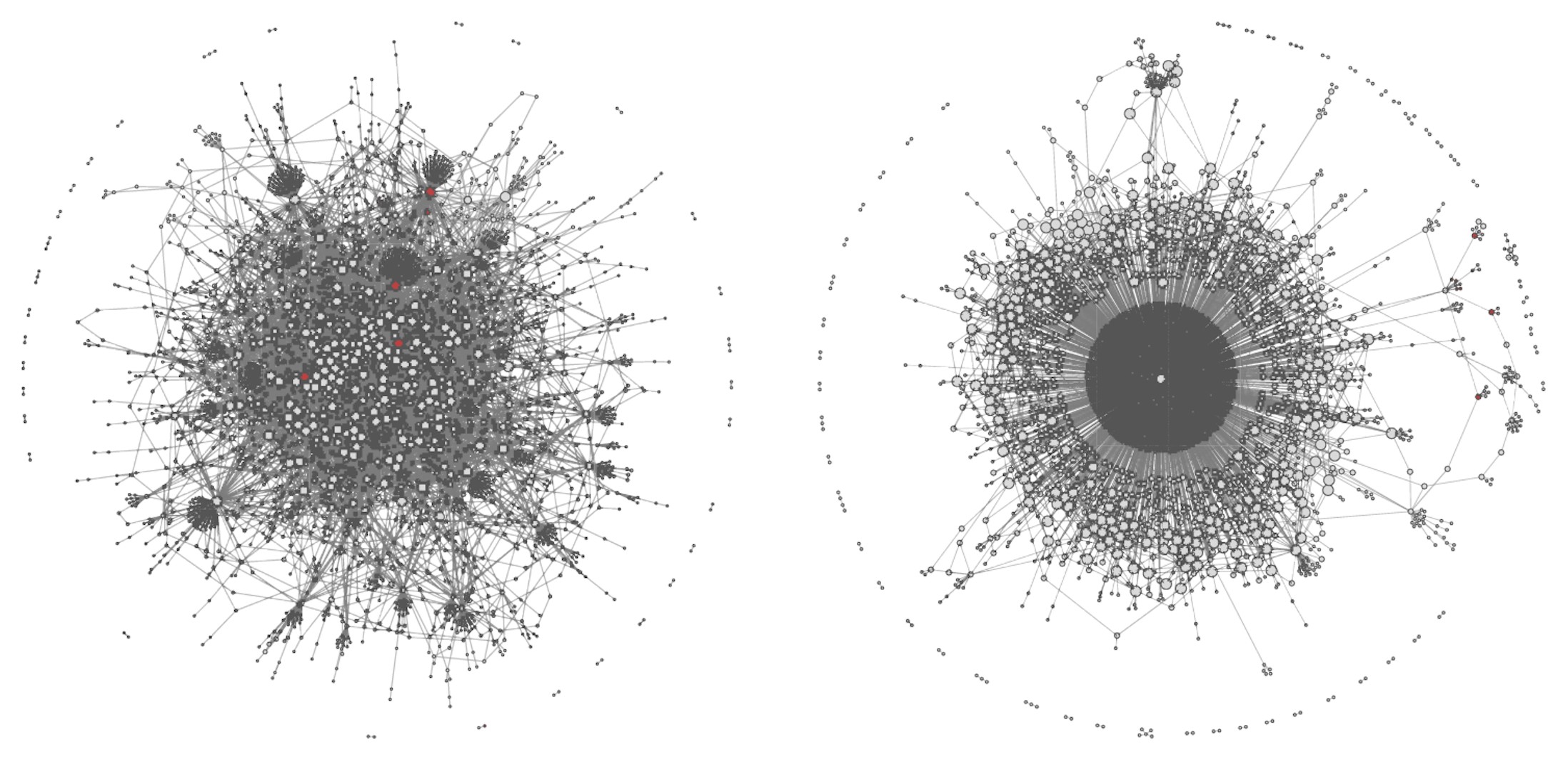
We analyzed the coordinated activity on Reddit that led to target short-selling activity by hedge funds on GameStop shares, causing a surge in the share price and triggering significant losses for the funds involved. We found that a small fraction of individuals can trigger large behavioural cascades, and we show the role of commitment, network centrality, and social identity in such coordination process. Our findings shed light on financial collective action, which several observers anticipate will grow in importance. - Generalized Euclidean Measure to Estimate Distances on Multilayer Networks, by M. Coscia, published in ACM Transactions on Knowledge Discovery from Data
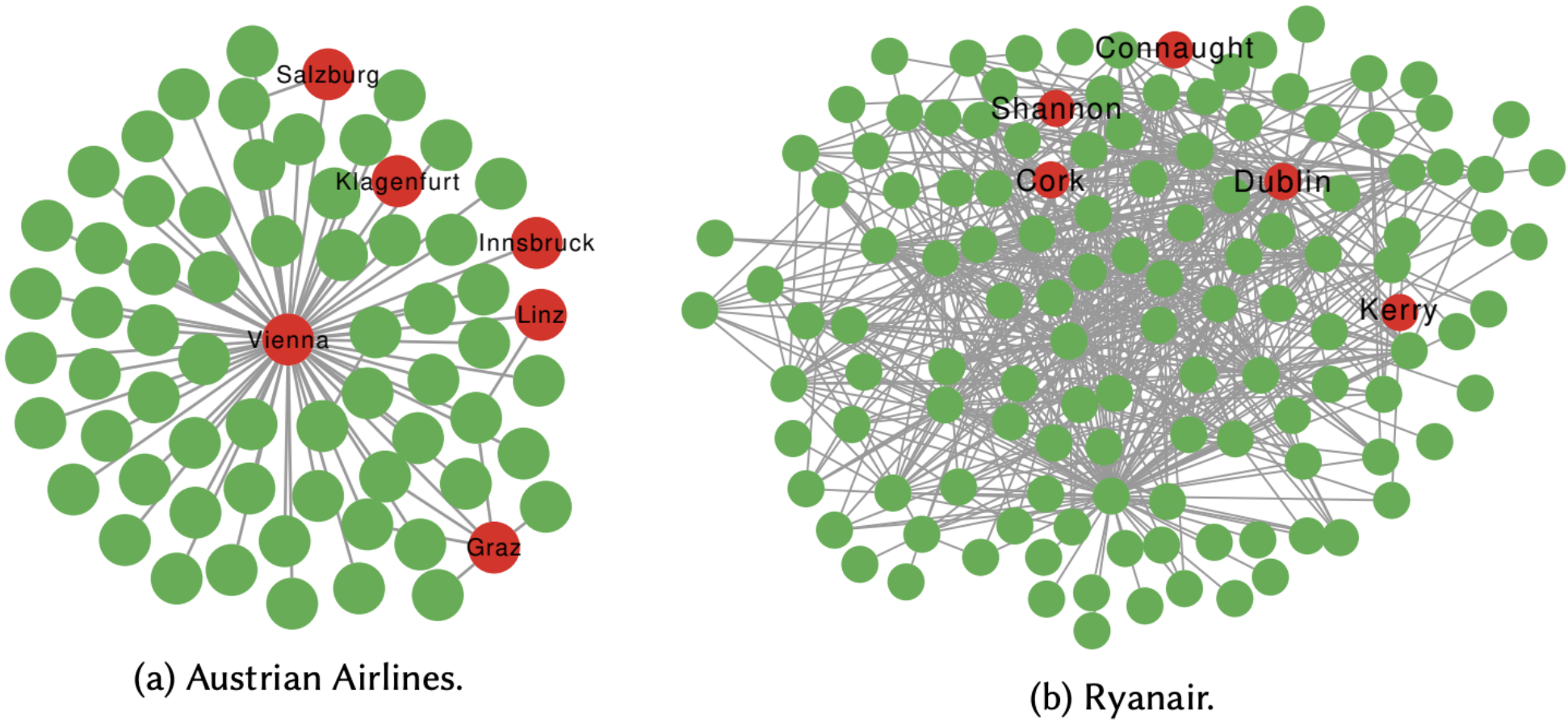
In this paper we propose an algorithm solving node vector distance for multilayer networks, which is a problem that arises for all kinds of network spreading processes like epidemics, economic growth, or human behavior. We do so by adapting the Mahalanobis distance, incorporating the graph’s topology via the pseudoinverse of its Laplacian. Since this is a proper generalization of the Euclidean distance in a complex space defined by the topology of the graph, and that it works on multilayer networks, we call our measure the Multi Layer Generalized Euclidean (MLGE).
- From Reddit to Wall Street: the role of committed minorities in financial collective action, by L. Lucchini, L.M. Aiello, L. Alessandretti, G. De Francisci Morales, M. Starnini and A. Baronchelli, published in Royal Society Open Science
Roberta became co-lead in the AI Pioneer Centre
Yesterday Denmark’s new Pioneer Center for Artificial Intelligence was opened ceremonially, where Roberta took part in a panel discussion. Roberta’s role in the centre will be the new co-load of the Networks and Graphs Collaboratory together with Sune Lehmann.
The Pioneer Centre for Artificial Intelligence focuses on fundamental research, and within an interdisciplinary framework, develops platforms, methods, and practices addressing society’s greatest challenges. It brings together world-class artificial intelligence research in Denmark.
We are excited to see the novel science the centre will enable and produce, and which opportunities it will bring for attracting more world-class research to the country.
Two NERDS papers out: Measuring Violence via Twitter and Missing Links in Bike Networks
We start the spring with two new papers:
-
- Measuring Violence: A Computational Analysis of Violence and Propagation of Image Tweets From Political Protest, by L. Rossi, C. Neumayer, J. Henrichsen, and L.K. Beck, published in Social Science Computer Review
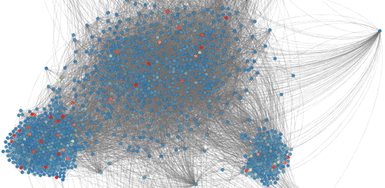
We investigated the impact of violence on the propagation of images in social media in the context of political protest. Using a computational approach, we measure the relative violence of a large set of images shared on Twitter during the protests against the G20 summit in Frankfurt am Main in 2017. This allows us to investigate if more violent content is shared more times and faster than less violent content on Twitter, and if different online communities can be characterized by the level of violence of the visual content they share. The level of violence in an image tweet does not correlate with the number of retweets and mentions it receives that the time to retweet is marginally lower for image tweets containing a high level of violence and that the level of violence in image tweets differs between communities. - Automated Detection of Missing Links in Bicycle Networks, by A. Vybornova, T. Cunha, A. Gühnemann, and M. Szell, published in Geographical Analysis
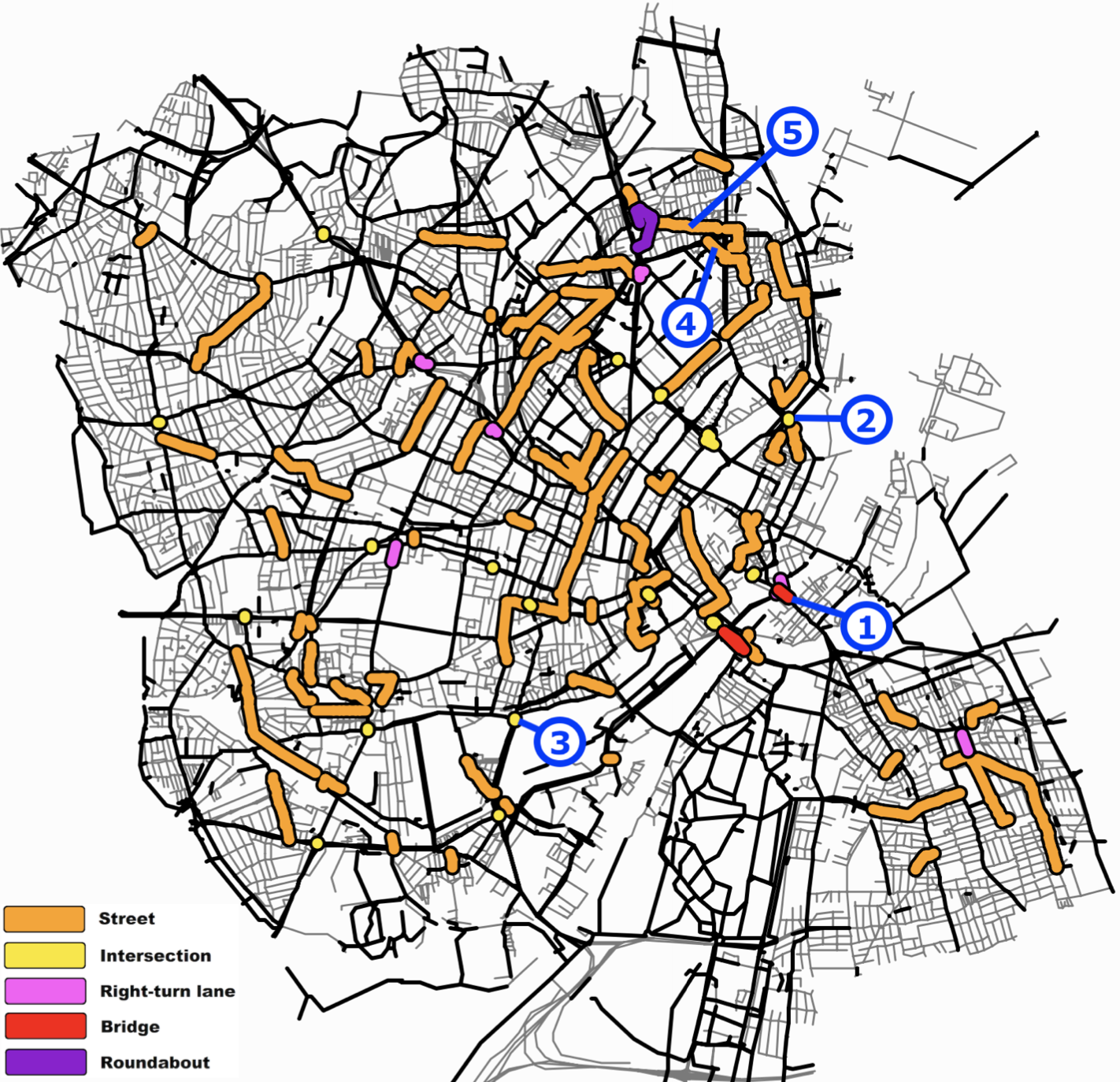
Here, we develop the IPDC procedure (Identify, Prioritize, Decluster, Classify) for finding the most important missing links in urban bicycle networks, using data from OpenStreetMap. In this procedure we first identify all possible gaps following a multiplex network approach, prioritize them according to a flow-based metric, decluster emerging gap clusters, and manually classify the types of gaps. We apply the IPDC procedure to Copenhagen and report the 105 top priority gaps. For evaluation, we compare these gaps with the city’s most recent Cycle Path Prioritization Plan and find considerable overlaps. Our results show how network analysis with minimal data requirements can serve as a cost-efficient support tool for bicycle network planning.
We also developed an interactive visualization of our results at: fixbike.net
- Measuring Violence: A Computational Analysis of Violence and Propagation of Image Tweets From Political Protest, by L. Rossi, C. Neumayer, J. Henrichsen, and L.K. Beck, published in Social Science Computer Review
First NERDS papers of 2022 published: Epidemic Dreams and Conflicts versus Polarization
We start 2022 with two new papers!
-
- Epidemic dreams: dreaming about health during the COVID-19 pandemic, by S. Šćepanović, L.M. Aiello, D. Barrett and D. Quercia, published in Royal Society Open Science
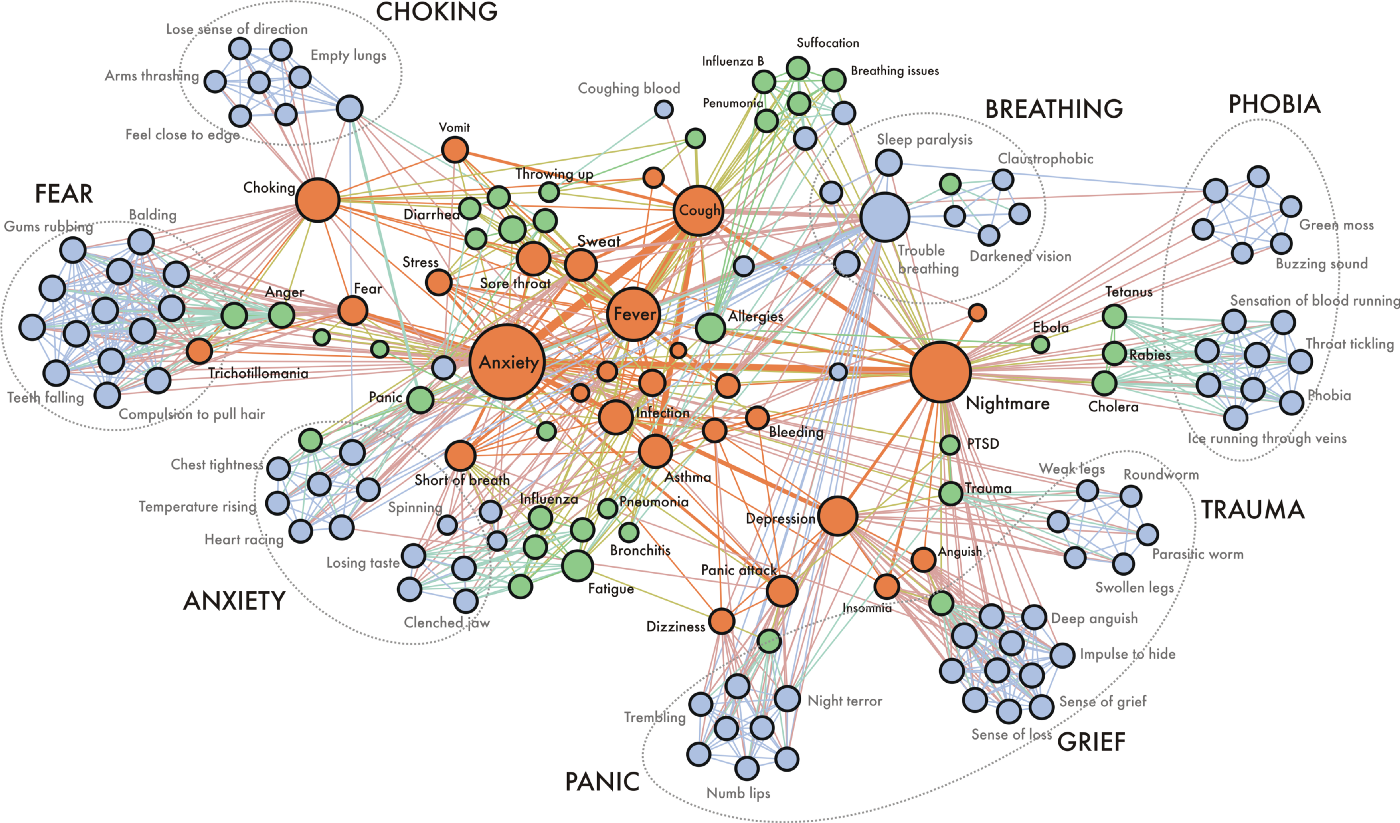
Luca and collaborators ask: Why were our dreams during the pandemic weird? Their computer analysis unearthed buried psychological reactions to the COVID-19 pandemic: expressions in waking life reflected a linear and logical thought process and, as such, described realistic symptoms or related disorders (e.g. nasal pain, SARS, H1N1); those in dreaming life reflected a thought process closer to the visual and emotional spheres and, as such, described either conditions unrelated to the virus (e.g. maggots, deformities, snake bites), or conditions of surreal nature (e.g. teeth falling out, body crumbling into sand). - How minimizing conflicts could lead to polarization on social media: An agent-based model investigation, by M. Coscia and L. Rossi, published in PLOS ONE
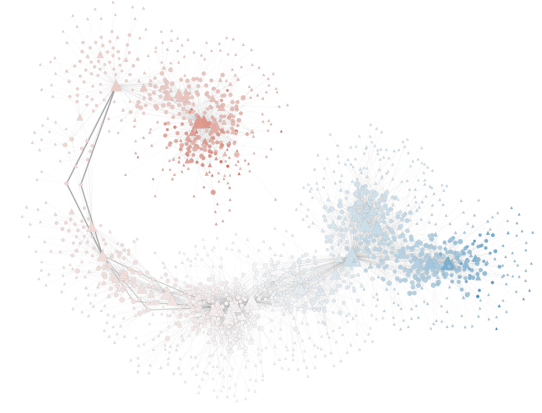
The paper explores an agent based model on how policing content and backlash on social media (i.e. conflict) can lead to an increase in polarization for both users and news sources. We find that the tendency of users and sources to avoid policing, backlash and conflict in general can increase polarization online. Specifically polarization comes from the ease of sharing political posts, intolerance for opposing points of view causing backlash and policing, and volatility in changing one’s opinion when faced with new information. On the other hand, it seems that the integrity of a news source in trying to resist the backlash and policing has little effect.
Learn more on Michele’s blogpost.
- Epidemic dreams: dreaming about health during the COVID-19 pandemic, by S. Šćepanović, L.M. Aiello, D. Barrett and D. Quercia, published in Royal Society Open Science
Call for PhD scholarships by the Danish Data Science Academy
 The new Danish Data Science Academy (DDSA), which we helped to establish, invites applications for ten three-year PhD scholarships for individual research projects within any field of data science, including all research topics pursued by NERDS. The DDSA encourages visionary and ambitious young data scientists to develop their own research projects with the assistance of a supervisor from a Danish university (like ITU).
The new Danish Data Science Academy (DDSA), which we helped to establish, invites applications for ten three-year PhD scholarships for individual research projects within any field of data science, including all research topics pursued by NERDS. The DDSA encourages visionary and ambitious young data scientists to develop their own research projects with the assistance of a supervisor from a Danish university (like ITU).
See more information here: https://ddsa.dk/open-calls/open-call-for-phd-scholarships/
Deadline for application is 20 March 2022
Given that both our currently existing PhD students (Anastassia and Ane) were hired through similar calls, there is a good probability to make this also work out for future candidates. If your research interests overlap with ours and you are interested please get in touch with one of our assistant or associate professors to explore options to apply!
You will need to come up with your own research plan, but feel free to get inspired by our most recent master level project ideas: https://nerds.itu.dk/2021/09/01/research-project-market-2021/
Ane Rahbek Vierø has joined NERDS
Happy new year! 🥳
We are thrilled to welcome Ane Rahbek Vierø to our research group!
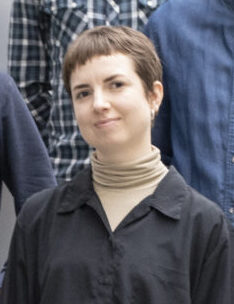 Ane joins us as PhD student for 3 years, funded by the Danish Ministry of Transport for an application which she authored, supported by her new supervisor Michael Szell. She completed her Master’s degree in 2020 from Lund University on a thorough analysis of Copenhagen’s bicycle network, and has been working since then as research assistant at Aalborg University. Her background is in Geographical Information Science which is a great complement for our existing NERDS expertise. She is also well connected in the Danish cycling research community, having co-organized the recent CRBAM21, which will additionally strengthen our research group’s connections within Denmark.
Ane joins us as PhD student for 3 years, funded by the Danish Ministry of Transport for an application which she authored, supported by her new supervisor Michael Szell. She completed her Master’s degree in 2020 from Lund University on a thorough analysis of Copenhagen’s bicycle network, and has been working since then as research assistant at Aalborg University. Her background is in Geographical Information Science which is a great complement for our existing NERDS expertise. She is also well connected in the Danish cycling research community, having co-organized the recent CRBAM21, which will additionally strengthen our research group’s connections within Denmark.
Given her professional expertise in bicycle network analysis, her GIS background and procedural approach via Python, and her past experience – such as an internship in the cycling development team of the municipality of Copenhagen – she is the perfect person to undertake this ambitious PhD project: Network analysis of the Danish cycling infrastructure.
Together with our PhD student Anastassia, who works on a very similar topic and who also joined recently, we anticipate an increasing output in cycling research in the coming years. Our goal is not just producing research papers, but more importantly to improve the Danish cycling landscape locally, and to provide general insights and methods towards a modal shift to sustainable transport on the global level.

